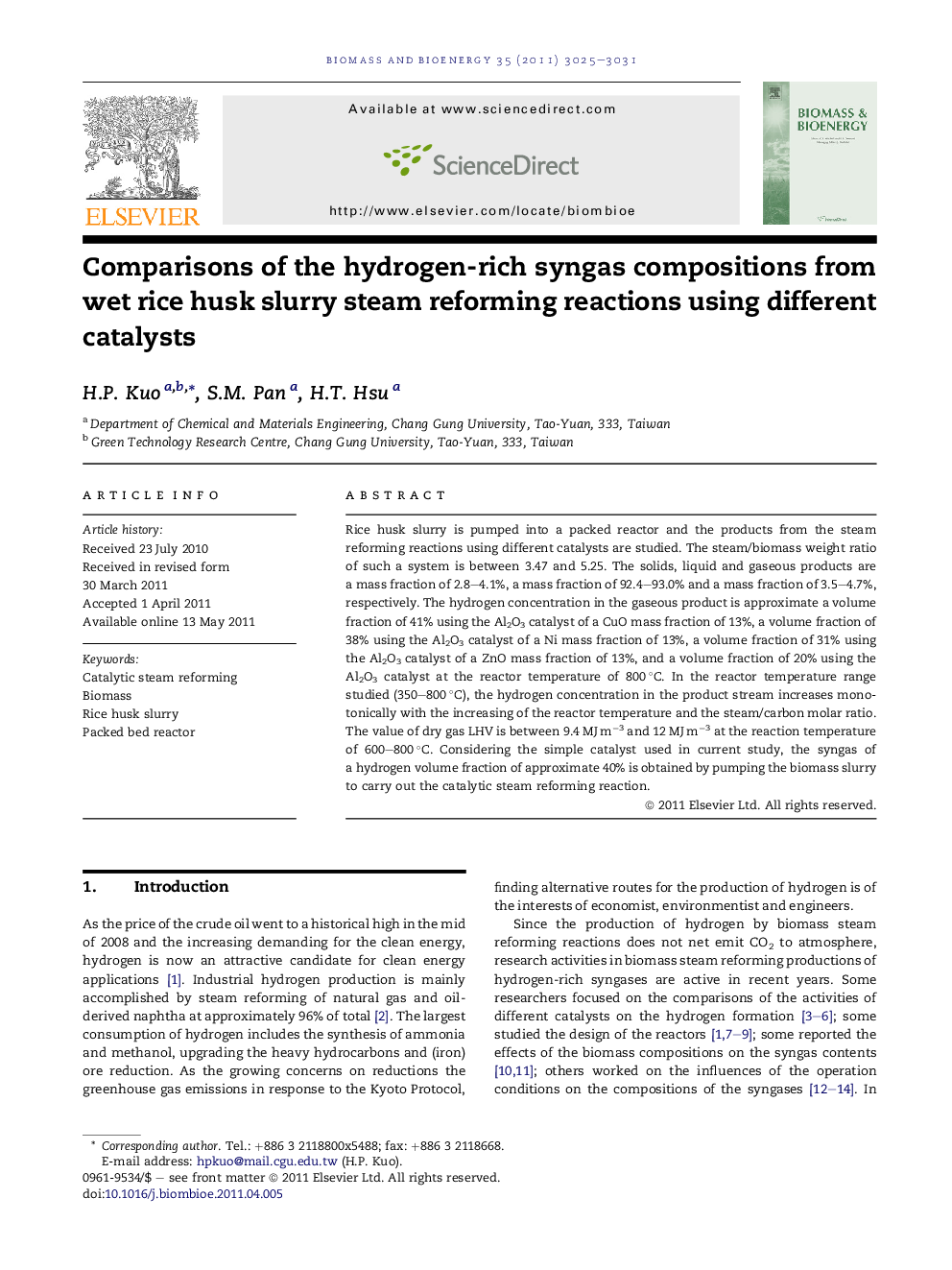| کد مقاله | کد نشریه | سال انتشار | مقاله انگلیسی | نسخه تمام متن |
|---|---|---|---|---|
| 677889 | 888625 | 2011 | 7 صفحه PDF | دانلود رایگان |

Rice husk slurry is pumped into a packed reactor and the products from the steam reforming reactions using different catalysts are studied. The steam/biomass weight ratio of such a system is between 3.47 and 5.25. The solids, liquid and gaseous products are a mass fraction of 2.8–4.1%, a mass fraction of 92.4–93.0% and a mass fraction of 3.5–4.7%, respectively. The hydrogen concentration in the gaseous product is approximate a volume fraction of 41% using the Al2O3 catalyst of a CuO mass fraction of 13%, a volume fraction of 38% using the Al2O3 catalyst of a Ni mass fraction of 13%, a volume fraction of 31% using the Al2O3 catalyst of a ZnO mass fraction of 13%, and a volume fraction of 20% using the Al2O3 catalyst at the reactor temperature of 800 °C. In the reactor temperature range studied (350–800 °C), the hydrogen concentration in the product stream increases monotonically with the increasing of the reactor temperature and the steam/carbon molar ratio. The value of dry gas LHV is between 9.4 MJ m−3 and 12 MJ m−3 at the reaction temperature of 600–800 °C. Considering the simple catalyst used in current study, the syngas of a hydrogen volume fraction of approximate 40% is obtained by pumping the biomass slurry to carry out the catalytic steam reforming reaction.
► We carry out steam reforming reaction using rice husk slurry as the feeding.
► CuO/Al2O3, Ni/Al2O3, ZnO/Al2O3 and Al2O3 catalysts are used.
► The syngas of a hydrogen volume fraction of approximate 40% is obtained.
► Gas LHV is between 9.4 MJ m−3 and 12 MJ m−3 at reaction temperature 600–800 °C.
Journal: Biomass and Bioenergy - Volume 35, Issue 7, July 2011, Pages 3025–3031